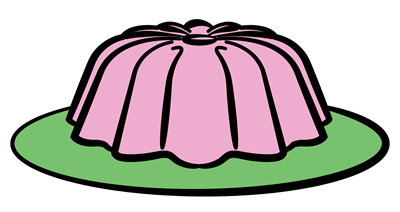I saw this recipe and just started laughing. Celery is one of the lowest-calorie vegetables out there, and we’re deep frying it.
WHY NOT!
- 3 tablespoons flour
- 1 egg, slightly beaten
- 1 cup milk
- Celery hearts
- Fine bread crumbs
- Blend flour and egg, add milk gradually beating after each addition.
- Wash celery hearts thoroughly and separate into quarters. Cook in chicken broth or water for ten minutes. Drain.
- Dip celery in batter and then in fine bread crumbs and fry in deep fat (370° F.) three to six minutes until golden brown. Drain on absorbent paper and sprinkle with salt. Serve hot. This batter is sufficient for frying celery for 6 people.
But you can’t just deep fry celery. That would be silly. You obviously need to boil it first.
You’ll notice that there’s a handful of celery segments that still have their leaves included. I can’t stand celery leaves, but Buzz enjoys them, so I figured I’d leave a few intact.
The batter was extremely liquid — I would recommend only half the amount of milk that Elvira C. Larson called for. (Just something to think about the next time you’re deep frying celery.)
Oh, another something to think about: it’s really difficult to get a good photograph while deep frying! There are just so many bubbles. Plus it’s cooking pretty darn fast (we don’t want BURNT fried celery hearts) and so there’s a hilarious dance of grabbing the camera, attempting to get a reasonable picture, dropping the camera and grabbing the slotted spoon…
Also: salt these when they’re done frying. No point in ingesting greasy breaded vegetables if you’re not also upping your sodium intake.
In an attempt to make up for this “vegetable” side, I made steaks to go with. Unfortunately, that distraction can only go so far.
But it did lead to this picture (which I just had to share) — we asked the oldest kid to get sharp knives from the kitchen (nobody can cut a steak with a butter knife), and she came back with a handful of big cooking knives. THAT was a pretty good distraction from the celery.
Verdict: Forgettable.
From our tasting notes:
This isn’t actually that bad, but only because it’s hard to make bad deep-fried veggies. However: celery is flavorless. And when celery is briefly boiled, the flesh gets soft but the strings don’t — so trying to bite a piece off is pretty difficult. It’s also quite bland without salt. Finally: the celery leaves tasted a lot better than the stems, probably because there was a higher proportion of fried breading on them.











This was hilarious! If I’m gonna drag out the deep fryer, heat up a vat of oil, and make my house smell for days to come, I’d be frying better things than celery! (though I might bread some and throw it in just because the deep fryer is already cranking).
When Ruth sent me this recipe, I laughed my butt off. It definitely does feel like “well, we’ve deep fried everything else, what else is in the fridge” recipe
Wait…. celery has hearts?
I’m not sure whether the celery heart is the bunch of stems that you see in the produce department at the grocery store, or the internal stems (that tend to be much paler green). But yes, a celery plant has a celery heart.
Regarding milk consistency: My dad says milk was much thicker back then because they left more of the cream in. So even “whole” milk is not as whole as it was at the time, since all of the cream has now been removed. He complains that what we drink nowadays is basically “milk flavored water.” Of course, he’s seventy.
BTW, the format makes me think this is a 1940’s recipe. They were desperately trying to use up Victory Garden veggies in recipes back then.
Hey! This looked especially dubious to me, so I did a little googling. As it turns out, only the innermost celery stalks that are slender, pale, leafless, and lacking those dental-floss-like strings are considered celery “hearts.” Looks like you simply took all the stalks and fried ’em up. What would Elvira say??
There’s some mild debate over that; two produce guys I asked thought that celery hearts were the whole bunch, and bags of “celery hearts” always include the stiffer outside stalks as well. So I just shrugged and fried up everything.
The internal stems included in this batch didn’t taste much better than the outer stalks (and still had strands, albeit thinner).